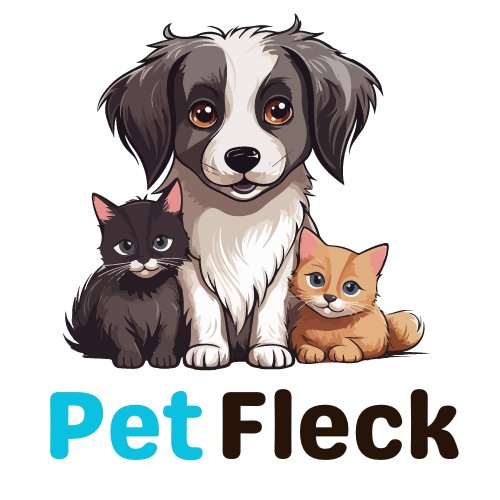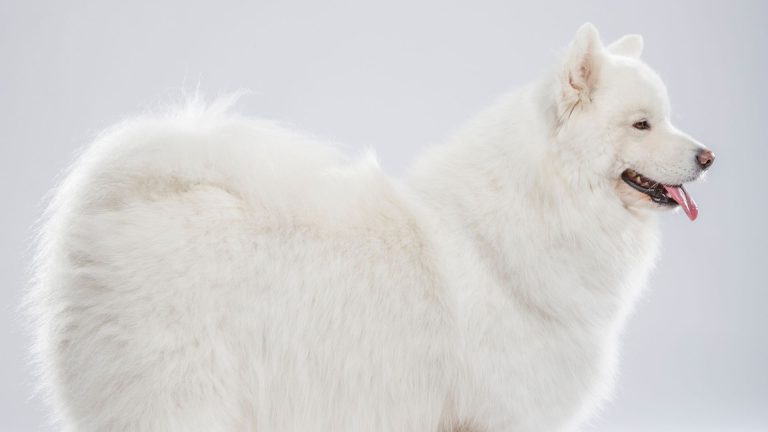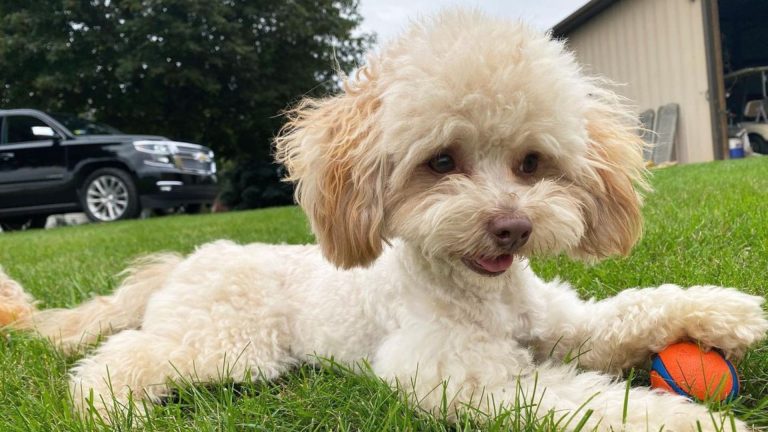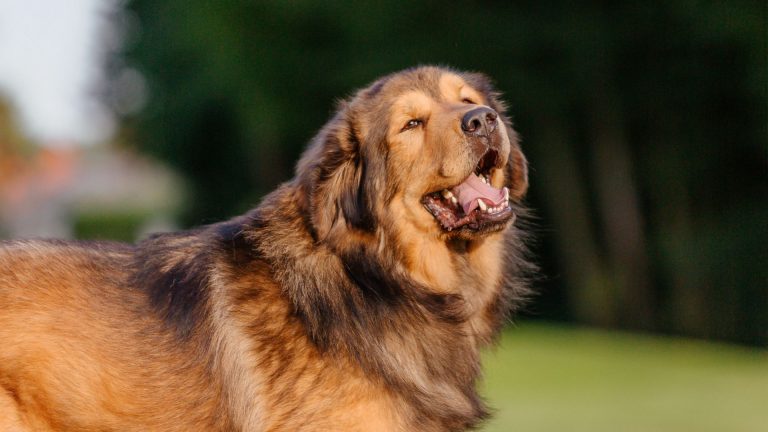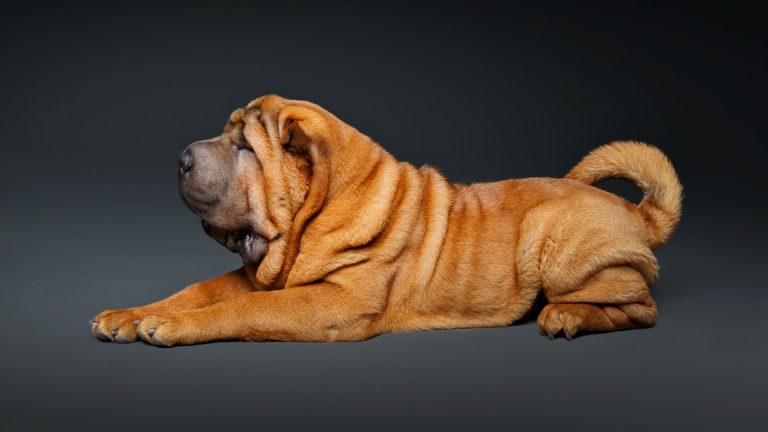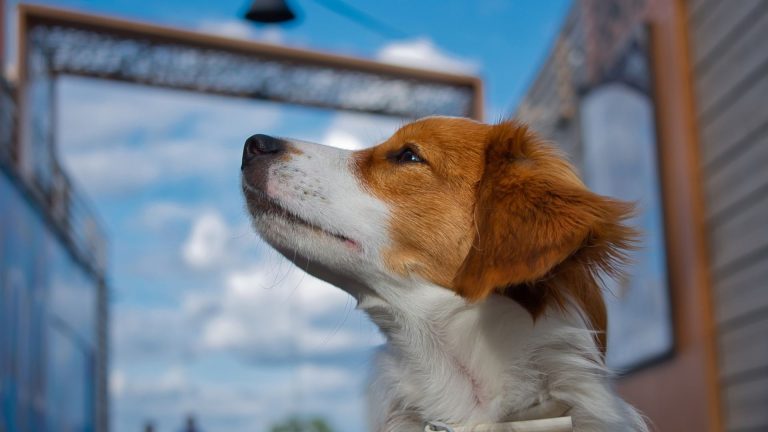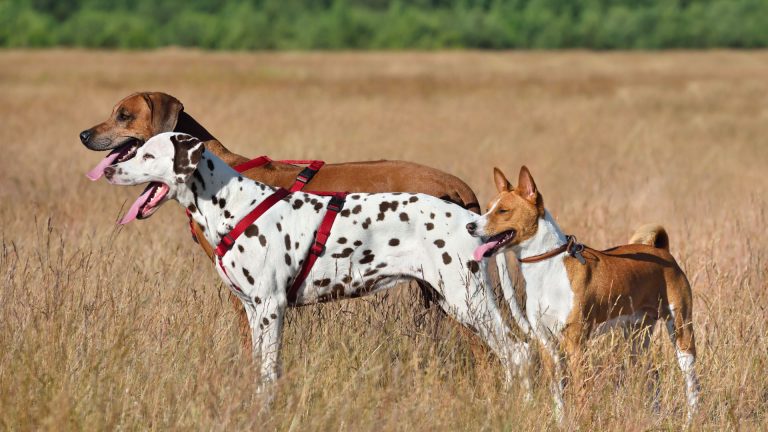Contents
Big hairy dog breeds are known for their impressive size and distinctive coats. These breeds often turn heads with their majestic appearance and friendly demeanor. Understanding their unique characteristics is crucial for potential owners. This knowledge helps ensure these dogs get the care and attention they need.
In this article, we’ll explore the top 10 big hairy dog breeds. We’ll discuss their origins, physical traits, temperaments, and grooming needs. Whether you’re considering adopting one of these gentle giants or just curious, this guide will provide all the essential information.
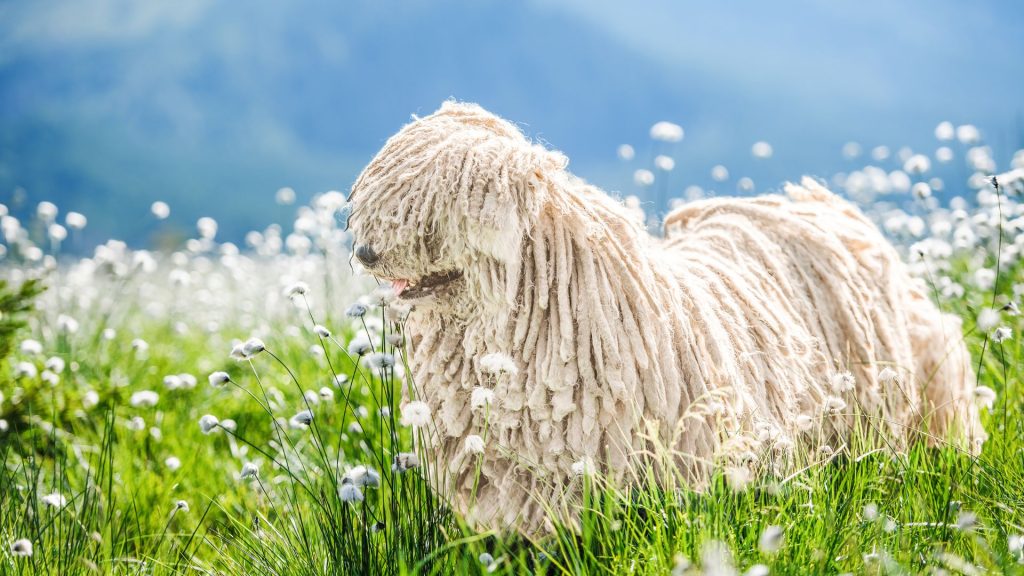
Benefits of Owning a Big Hairy Dog
Owning a big hairy dog comes with numerous benefits. These dogs are known for their unwavering companionship and loyalty, forming strong bonds with their owners. Their protective nature makes them excellent guardians for families. Additionally, their unique aesthetic appeal, with their lush, flowing coats, adds a majestic presence to any home. However, potential challenges include the need for regular grooming and their significant space and exercise requirements. Understanding these aspects ensures a fulfilling and enjoyable experience for both the dog and the owner.
Top 10 Big Hairy Dog Breeds
Here are the top 10 big hairy dog breeds:
Newfoundland
Newfoundlands originated in Newfoundland, Canada, where they were bred by fishermen to assist with hauling nets, retrieving lost gear, and rescuing people from the water. Their excellent swimming abilities and lifesaving instincts made them invaluable to the fishing communities.
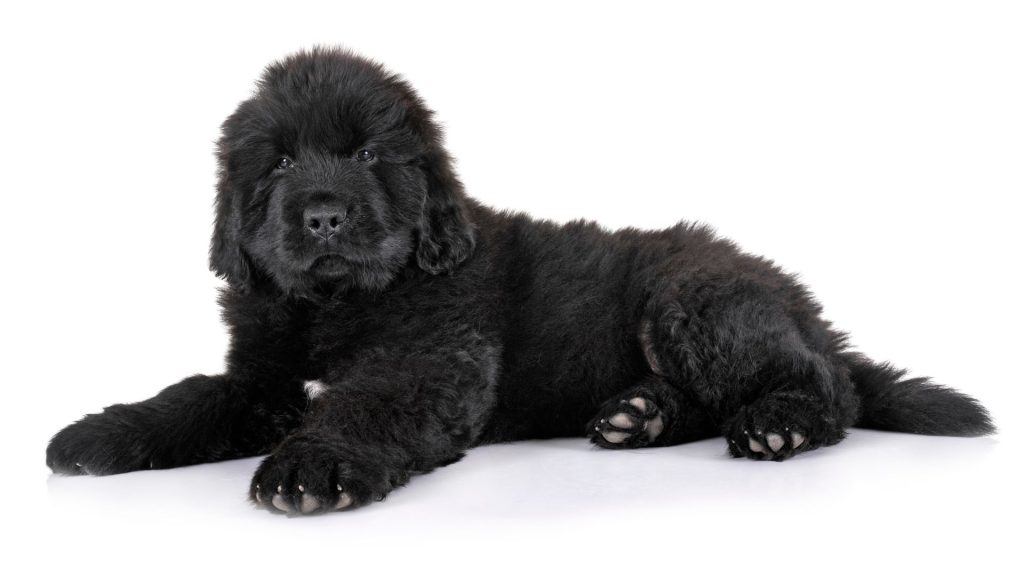
Physical Characteristics
Newfoundlands are large, robust dogs with a thick, water-resistant double coat. They can weigh between 100 to 150 pounds and stand 26 to 28 inches tall at the shoulder. Their coats are typically black, brown, gray, or Landseer (white and black).
Temperament and Behavior
Known for their gentle, patient, and calm demeanor, Newfoundlands are excellent with children and make wonderful family pets. They are highly social, friendly, and protective, often forming strong bonds with their families. Their intelligence and trainability make them versatile companions.
Grooming Needs
Regular brushing is essential to prevent matting and reduce shedding. Due to their oily coats, which help repel water, they require frequent baths to maintain cleanliness and health. Special attention should be given to their ears and teeth to prevent infections and dental issues. Additionally, regular nail trimming is necessary to keep their paws healthy and comfortable.
Saint Bernard
Saint Bernards originated in the Swiss Alps, where they were bred by monks at the Saint Bernard Hospice for rescue work. These dogs were trained to find and save travelers lost in the snow and avalanches, becoming famous for their lifesaving efforts.
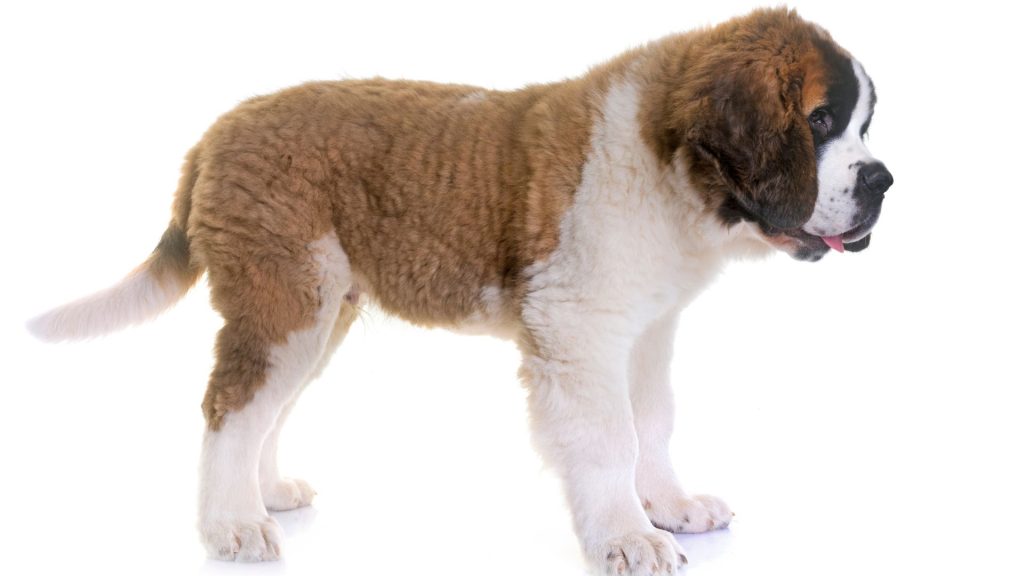
Physical Characteristics
Saint Bernards are large and muscular, with a dense, short to medium-length coat. They typically weigh between 140 to 180 pounds and stand 26 to 30 inches tall. Their coats can be smooth or rough and are usually white with red, brown, or brindle markings.
Temperament and Behavior
Saint Bernards are known for their calm, friendly, and gentle nature. They are affectionate and patient, making them excellent companions for families and children. These dogs are also protective and loyal, often forming strong bonds with their owners. Despite their size, they are relatively low-energy indoors but enjoy outdoor activities.
Grooming Needs
Saint Bernards shed heavily, especially during shedding seasons, so regular grooming is necessary to manage their coat. Brushing several times a week helps reduce shedding and prevents matting. They require occasional baths to keep their coat clean. Additionally, regular ear cleaning, dental care, and nail trimming are important to maintain their overall health.
Bernese Mountain Dog
The Bernese Mountain Dog originated in the Swiss Alps, specifically in the region of Bern. They were bred as versatile farm dogs, used for herding cattle, pulling carts, and guarding property. Their strength and endurance made them indispensable to farmers in mountainous regions.
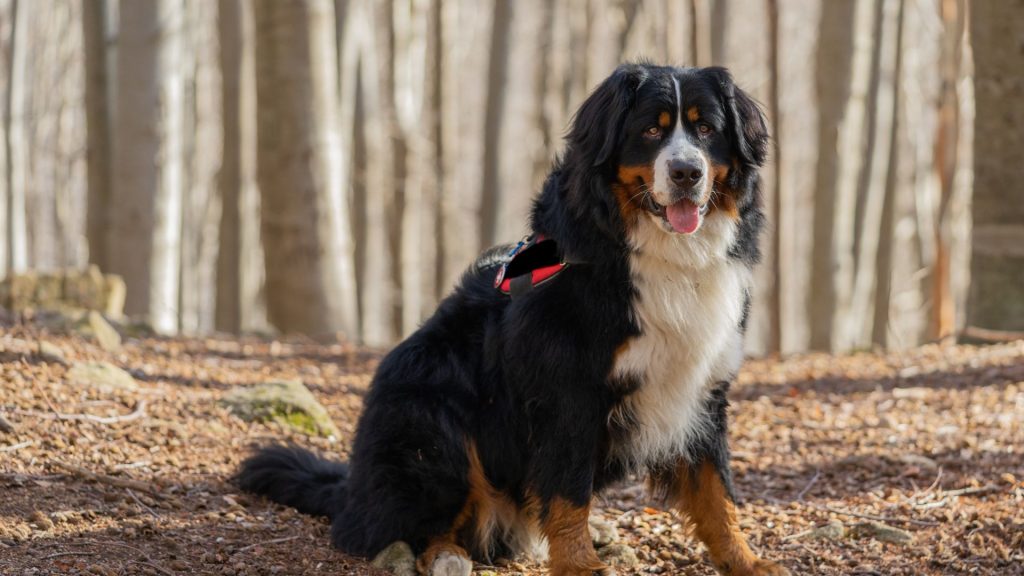
Physical Characteristics
Bernese Mountain Dogs are large, sturdy dogs with a thick, long, and silky tricolored coat of black, white, and rust. They typically weigh between 70 to 115 pounds and stand 23 to 28 inches tall at the shoulder. Their expressive eyes and gentle demeanor add to their appealing appearance.
Temperament and Behavior
Bernese Mountain Dogs are known for their good-natured, calm, and friendly temperament. They are loyal, affectionate, and excellent with families and children. These dogs are intelligent and eager to please, making them relatively easy to train. They are social animals that thrive on companionship and enjoy being part of family activities.
Grooming Needs
Their long coat requires regular brushing to prevent mats and tangles and to reduce shedding. They shed heavily, especially during spring and fall, so more frequent grooming is needed during these times. Regular baths help maintain coat cleanliness. Additionally, routine ear cleaning, dental care, and nail trimming are essential for their overall health.
Tibetan Mastiff
The Tibetan Mastiff originated in the Himalayan region, where it was traditionally used by nomadic tribes of Tibet, Nepal, and India to protect sheep from predators like wolves and leopards. These ancient dogs are among the oldest breeds, with a history that dates back thousands of years.
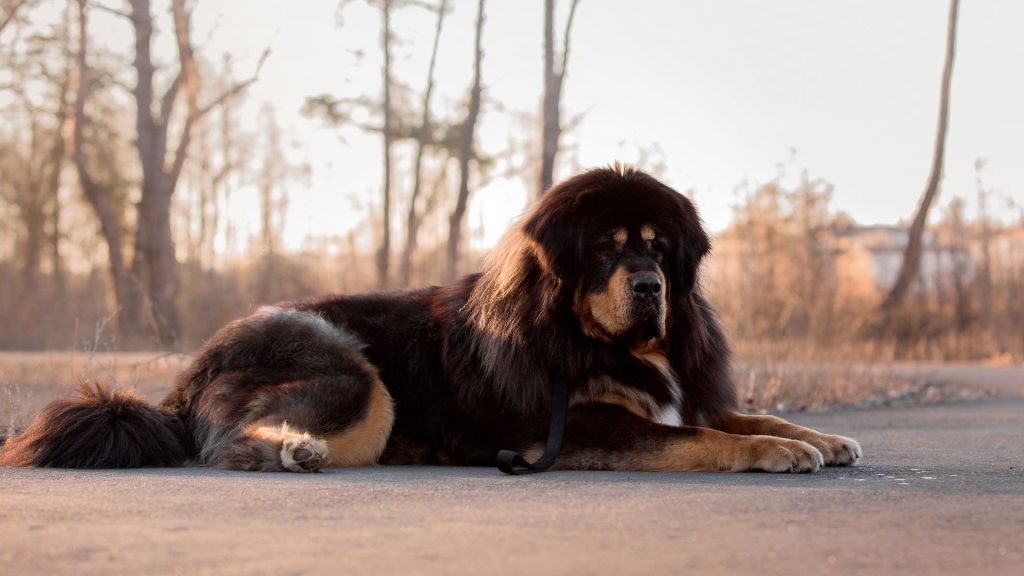
Physical Characteristics
Tibetan Mastiffs are large and powerful dogs with a thick double coat that provides excellent insulation against harsh weather. They typically weigh between 70 to 150 pounds and stand 24 to 26 inches tall. Their coats can be black, brown, blue-gray, or gold, often with tan markings. They have a distinctive mane around their neck, giving them a lion-like appearance.
Temperament and Behavior
Tibetan Mastiffs are independent, strong-willed, and protective. They are known for their loyalty and devotion to their families but can be aloof with strangers. Their guarding instincts make them excellent watchdogs. While they are intelligent and can be trained, their independent nature requires a confident and experienced owner.
Grooming Needs
Regular brushing is essential to manage their thick coat and reduce shedding. During shedding seasons, more frequent grooming is necessary to prevent matting. Bathing should be done as needed, but not too frequently, as it can strip their coat of natural oils. Additionally, regular ear cleaning, dental care, and nail trimming are important to maintain their overall health.
Great Pyrenees
The Great Pyrenees originated in the Pyrenees Mountains between France and Spain, where they were bred to guard sheep and protect livestock from predators such as wolves and bears. Their history as working dogs dates back thousands of years, and they have long been valued for their vigilance and protective nature.
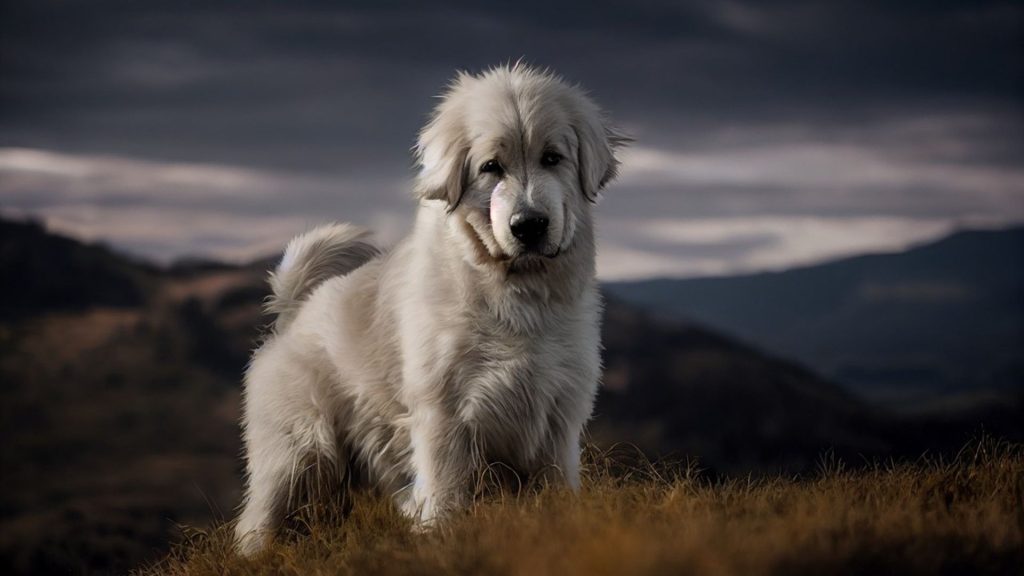
Physical Characteristics
Great Pyrenees are large, majestic dogs with a thick, weather-resistant double coat. They typically weigh between 85 to 115 pounds and stand 25 to 32 inches tall at the shoulder. Their coats are primarily white, sometimes with gray, badger, or tan markings. They have a strong, muscular build and a bushy tail that often curls over their back.
Temperament and Behavior
Great Pyrenees are known for their calm, patient, and gentle demeanor. They are deeply devoted and protective of their families, making them excellent guardians. While they are affectionate and good with children, they are also independent and can be stubborn. Their strong guarding instincts make them naturally wary of strangers.
Grooming Needs
Their thick coat requires regular brushing to prevent matting and reduce shedding, especially during the spring and fall shedding seasons. They need occasional baths to keep their coat clean and free from dirt. Additionally, regular ear cleaning, dental care, and nail trimming are important for maintaining their overall health.
Old English Sheepdog
The Old English Sheepdog was developed in England in the early 19th century as a herding dog, primarily used for driving sheep and cattle to market. Despite its name, the breed likely descended from various European herding dogs. Known for their work ethic and versatility, they quickly became beloved farm dogs.
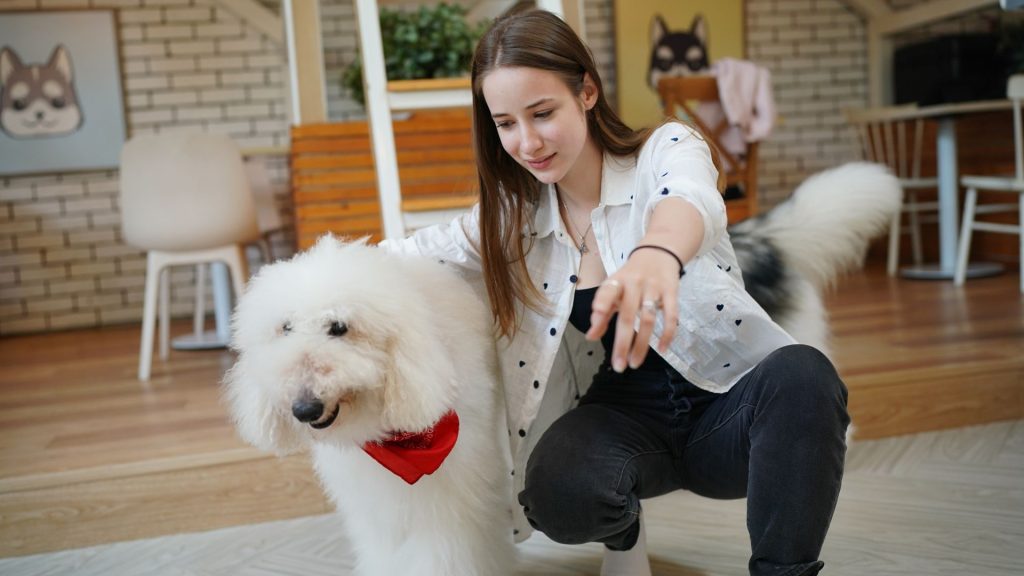
Physical Characteristics
Old English Sheepdogs are large, robust dogs with a distinctive shaggy, double coat that covers their entire body, including their eyes. They typically weigh between 60 to 100 pounds and stand 21 to 24 inches tall at the shoulder. Their coat can be various shades of gray, blue, or blue merle, often with white markings.
Temperament and Behavior
Old English Sheepdogs are known for their playful, affectionate, and friendly nature. They are intelligent, social, and make excellent family pets. Their protective instincts make them good watchdogs, but they are also gentle and great with children. They are energetic and enjoy being involved in family activities.
Grooming Needs
Their long, dense coat requires regular brushing to prevent mats and tangles. Grooming several times a week is essential to maintain their coat’s health and appearance. They also need regular baths to keep their coat clean. Additionally, routine ear cleaning, dental care, and nail trimming are necessary to keep them healthy and comfortable.
Komondor
The Komondor originated in Hungary, where they were used as livestock guardians. Their distinct corded coat helped them blend in with sheep, providing both camouflage and protection. This breed has been guarding flocks for centuries, with roots tracing back to the Magyar tribes that settled in Hungary over a thousand years ago.
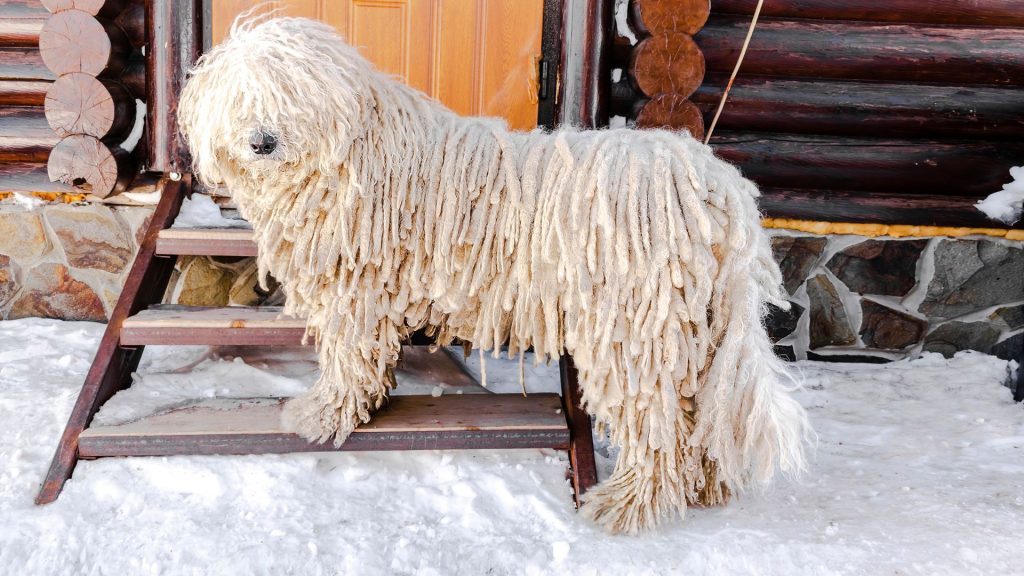
Physical Characteristics
Komondors are large and muscular, with a unique corded coat that resembles dreadlocks. They typically weigh between 80 to 100 pounds and stand 25 to 27 inches tall at the shoulder. Their coats are white and form naturally occurring cords as they mature, providing insulation and protection from predators.
Temperament and Behavior
Komondors are independent, protective, and loyal. They are known for their strong guarding instincts and are naturally reserved with strangers. However, they are affectionate and devoted to their families. Their independent nature means they require a confident and experienced owner to guide them.
Grooming Needs
The Komondor’s corded coat requires special care to maintain its distinctive appearance. Regular separation of the cords is necessary to prevent matting and to allow for proper air circulation. Bathing should be done carefully, ensuring the cords dry completely to avoid mildew. Additionally, routine ear cleaning, dental care, and nail trimming are essential for their overall health.
Leonberger
The Leonberger was developed in the 19th century in Leonberg, Germany, by crossing Saint Bernards, Newfoundlands, and Great Pyrenees. The breed was intended to resemble a lion, the town’s emblem. Initially used as versatile working dogs, they excelled in tasks such as guarding, herding, and pulling carts.
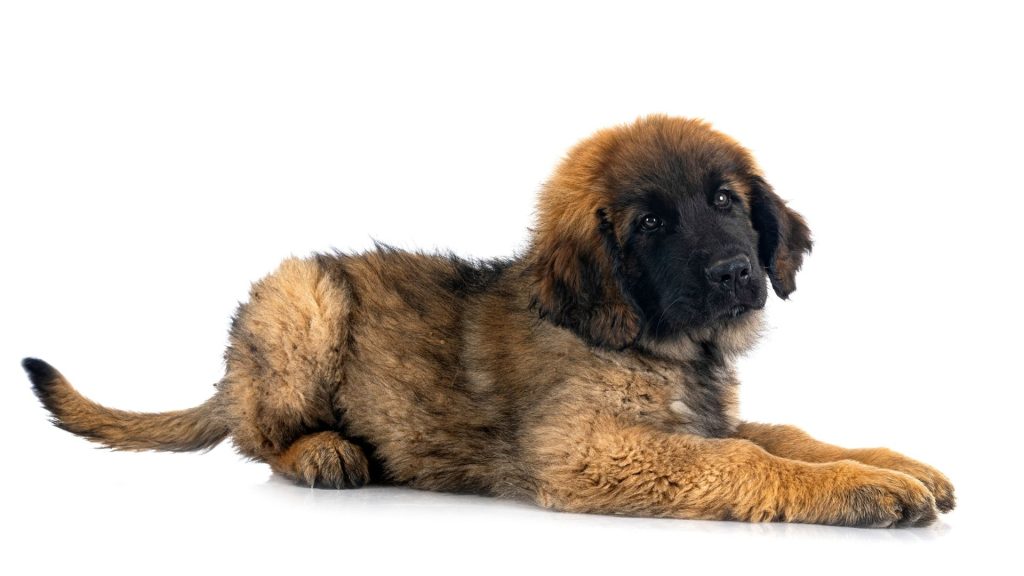
Physical Characteristics
Leonbergers are large and powerful dogs with a dense, water-resistant double coat. They typically weigh between 90 to 170 pounds and stand 25 to 32 inches tall at the shoulder. Their coat is usually golden to reddish-brown with a black mask, and they have a mane-like ruff around their neck, giving them a regal appearance.
Temperament and Behavior
Leonbergers are known for their gentle, friendly, and affectionate nature. They are excellent family dogs, especially with children, due to their patient and loving demeanor. They are social, intelligent, and eager to please, making them relatively easy to train. Despite their size, they are calm and well-mannered indoors but enjoy outdoor activities.
Grooming Needs
Regular brushing is essential to manage their thick coat and reduce shedding. They shed heavily, especially during spring and fall, so more frequent grooming is needed during these times. Regular baths help maintain coat cleanliness. Additionally, routine ear cleaning, dental care, and nail trimming are important for their overall health.
Afghan Hound
The Afghan Hound originated in the mountainous regions of Afghanistan, where they were used for hunting large game such as deer and leopards. Their history dates back thousands of years, and they are one of the oldest known dog breeds. They were prized for their speed, agility, and ability to navigate rough terrain.
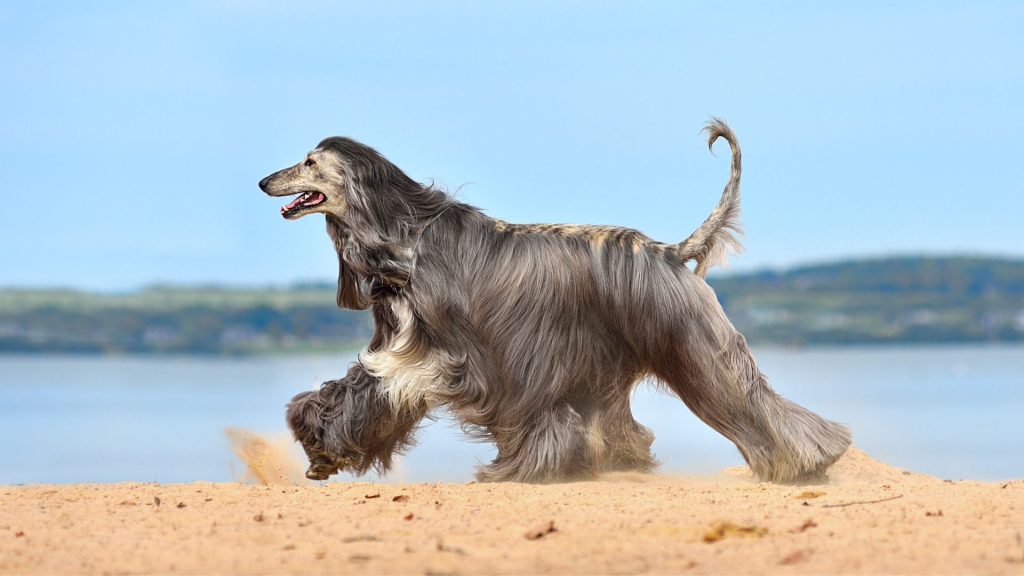
Physical Characteristics
Afghan Hounds are known for their elegant appearance and distinctive long, silky coat. They typically weigh between 50 to 60 pounds and stand 25 to 27 inches tall at the shoulder. Their coats can come in a variety of colors, including cream, black, red, and brindle. They have a narrow, refined head with a proud, dignified expression.
Temperament and Behavior
Afghan Hounds are independent, aloof, and dignified. They are known for their spirited and playful nature but can also be reserved, especially with strangers. Despite their independent streak, they are affectionate with their families and form strong bonds with their owners. They require gentle, patient training due to their sensitive nature.
Grooming Needs
Their long, silky coat requires regular grooming to prevent tangles and mats. Daily brushing is recommended to keep their coat in top condition. Afghan Hounds also need frequent baths to maintain the cleanliness and texture of their coat. Additionally, regular ear cleaning, dental care, and nail trimming are essential to their overall health and well-being.
Chow Chow
The Chow Chow originated in China over 2,000 years ago, where they were used for hunting, herding, pulling carts, and guarding property. They are one of the oldest dog breeds and have a rich history as versatile working dogs. Their distinctive appearance and noble demeanor have made them a symbol of status and prestige throughout history.
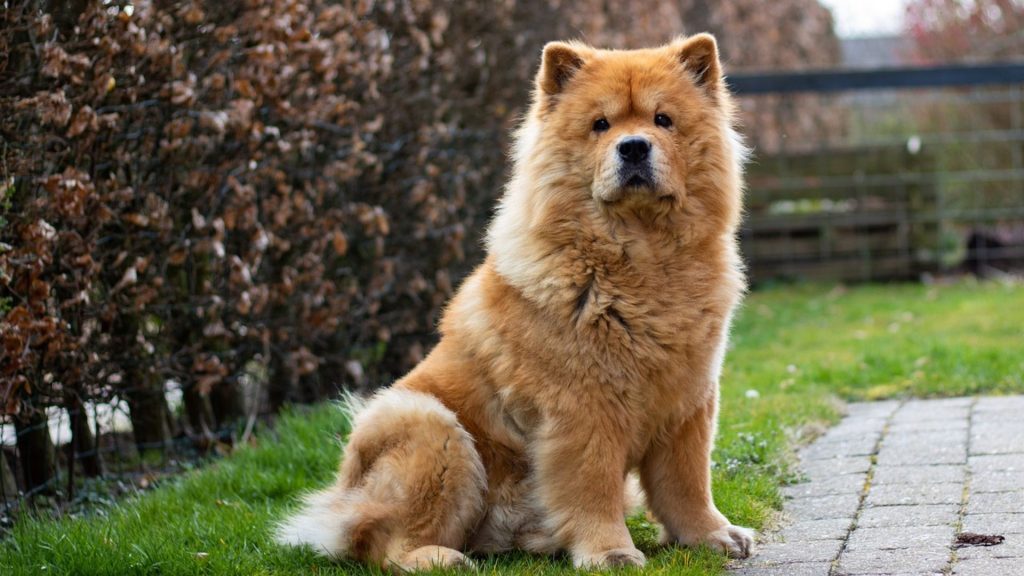
Physical Characteristics
Chow Chows are medium to large-sized dogs with a sturdy build and a distinctive lion-like mane. They typically weigh between 45 to 70 pounds and stand 17 to 20 inches tall at the shoulder. Their thick double coat can be rough or smooth and comes in various colors, including red, black, blue, cinnamon, and cream. They have a unique blue-black tongue and deep-set almond-shaped eyes.
Temperament and Behavior
Chow Chows are known for their independent and reserved nature. They are loyal and protective of their families but can be aloof with strangers. Despite their sometimes standoffish demeanor, they are affectionate with their owners and form strong bonds with them. They are intelligent and strong-willed, requiring consistent and patient training.
Grooming Needs
Their dense double coat requires regular grooming to prevent matting and reduce shedding. Weekly brushing is essential, with more frequent grooming needed during shedding seasons. They also require regular baths to keep their coat clean. Additionally, routine ear cleaning, dental care, and nail trimming are important to maintain their overall health and hygiene.
How to Care for Big Hairy Dog Breeds
Grooming Tips and Tools
Caring for big hairy dog breeds involves regular grooming to maintain their coat’s health and appearance. Use high-quality brushes, such as slicker brushes and undercoat rakes, to remove loose hair and prevent matting. Regular baths are essential to keep their coats clean, using dog-specific shampoos to avoid skin irritation. Additionally, invest in grooming tools like nail clippers, ear cleaners, and dental care products to ensure overall hygiene.
Diet and Nutrition
Big hairy dog breeds require a balanced diet tailored to their size and activity level. Choose high-quality dog food rich in protein, healthy fats, and essential vitamins and minerals. Large breed formulas are often beneficial, as they support joint health and provide the necessary nutrients for growth and maintenance. Consult with your veterinarian to determine the appropriate portion sizes and dietary supplements to keep your dog healthy and thriving.
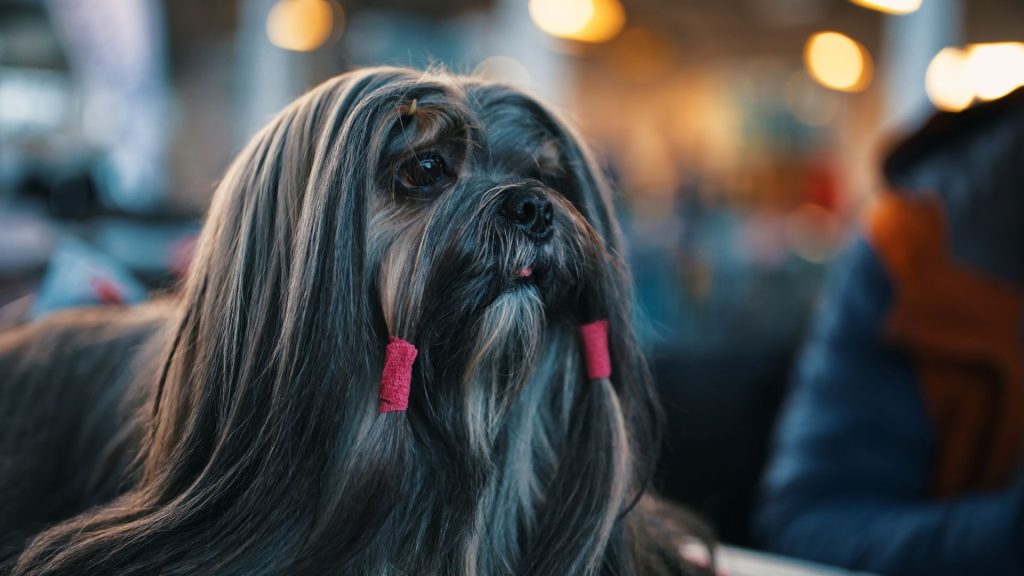
Exercise Requirements
Regular exercise is crucial for big hairy dog breeds to maintain their physical and mental well-being. These dogs typically enjoy activities such as long walks, hikes, and play sessions in spacious areas. Providing sufficient exercise helps prevent obesity and reduces the risk of joint issues. Tailor the exercise routine to your dog’s age, breed, and energy level to ensure they remain active and engaged.
Health Considerations
Big hairy dog breeds are prone to specific health issues, such as hip dysplasia, arthritis, and heart conditions. Regular veterinary check-ups are essential to monitor their health and catch any potential problems early. Ensure your dog receives routine vaccinations, parasite prevention, and dental care. Maintaining a healthy weight through proper diet and exercise is vital to reducing the risk of health complications.
Conclusion
Owning a big hairy dog breed comes with numerous benefits, including loyal companionship, protective nature, and unique aesthetic appeal. However, challenges such as regular grooming, exercise needs, and health considerations must be addressed. For those ready to commit, these dogs can bring immense joy and fulfillment. Potential owners should research thoroughly to find the breed that best fits their lifestyle and needs. With the right care and dedication, a big hairy dog can become a beloved family member and a cherished companion for years to come.

Hello, I’m Donna Carter, the founder and writer behind PetFleck.com. My journey with dogs started years ago, and it’s been a passion that has only grown stronger over time. I’ve always been fascinated by the unique behaviors and characteristics of different dog breeds, and this curiosity has led me to dive deep into the world of canine studies.
My love for dogs is the driving force behind everything I do. I’ve dedicated countless hours to researching and understanding the nuances of dog care, training, and breed-specific traits. This dedication helps me create content that is not only informative but also genuinely helpful for fellow dog lovers and owners.
At PetFleck, I combine my extensive knowledge and hands-on experience with my passion for dogs to provide valuable insights and tips. Whether it’s exploring different breeds or offering practical advice on dog care, I aim to share knowledge that makes a real difference in the lives of dogs and their families.
I’m thrilled to share my love for dogs with you through my writing. I hope my articles inspire and inform, helping you to better understand and appreciate the incredible bond we share with our furry friends.
Thank you for visiting PetFleck.com, and I look forward to connecting with you through our shared love of dogs!
